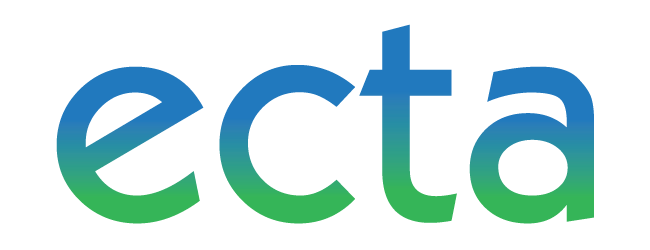Part B, Section 619 of IDEA
Updated September 21, 2022, 12:50 PMPart B, Section 619 of the IDEA authorizes additional preschool formula grants to states that are eligible for grants under Section 611 of Part B. States are eligible if they make Free Appropriate Public Education (FAPE) available to all children ages 3–5 with disabilities. While not mandatory, all states are currently providing IDEA services to preschool-aged children.
Welcome, Part B, Section 619 Coordinators!
The Office of Special Education Programs (OSEP), the Early Childhood IDEA Centers, and The National Association of Directors of Special Education (NASDSE) provide materials as part of a process to orient you to your new role as a Part B, Section 619 Coordinator and to the TA Center Network. The cross-center (DaSy, ECPC, ECTA, NCPMI) collaborative orientation process includes a welcome letter, orientation conference calls, and an introduction to technical assistance partners who can help you in your role.
For new Part B, Section 619 Coordinators, check out this Welcome Video to the TA Centers!
Download PDF: Part B, Section 619 of IDEA — OverviewPart B, Section 619 Overview
This overview has foundational information about the Part B, Section 619 system that you can return to as needed and share with partners. There are guiding questions to apply this information to your state and local context.
1. What is the purpose and philosophy of IDEA Part B, Section 619?
It is well documented that the beginning years of all children's lives are critical for building the early foundations of learning and wellness needed for success in school and later in life. During these years, children's brains develop rapidly, influenced by the experiences they share with their families, teachers, peers, and in their communities. Like all children, it is critical for children with disabilities to be exposed to a variety of rich experiences where they can learn in the context of play and everyday interactions and engage with their peers with and without disabilities.
The IDEA Part B provisions and requirements apply to children with disabilities ages 3–21 who are served under their state's Part B system, consistent with each state's determined age range. Section 619 of IDEA authorizes an additional preschool formula grant for states that are eligible for grants under Section 611 of Part B if the state makes available Free Appropriate Public Education (FAPE) to all children with disabilities ages 3–5 in the state. If consistent with state policy, IDEA funds can be used to provide services to 2-year-old children with disabilities who will turn 3 during the school year.
The specific Section 619 provisions of IDEA primarily detail the allocation of the 619 funding for state and local programs, and state-level administration and activities to support children with disabilities ages 3–5.
State Part B data reporting requirements under Section 618, generally include children who are preschool-aged where appropriate. A few reporting requirements are specific only to preschool children, including educational environments, child outcomes, and timely transition to preschool special education for children who received services under Part C early intervention. The data are used a part of OSEP's Annual Reports to Congress on the Implementation of the Individuals with Disabilities Education Act (IDEA) on the provision of FAPE to all children with disabilities, including preschoolers.
Guiding Question
What is your state's mission and vision related to Preschool Special Education?
2. What is the federal statute that establishes the Part B, Section 619 system?
In 2004, the Individuals with Disabilities Education Improvement Act (IDEA) reauthorized a The Individuals with Disabilities Education Act. Part B of IDEA is established in 20 U.S.C. Chapter 33, Subchapter II.
IDEA began as a civil rights law in 1975 to provide access for students with disabilities with a Free Appropriate Public Education (FAPE), it was later recognized that students with disabilities and their families needed additional support in the education process. By 1986, Congress recognized the benefits of supporting early learning for young children with disabilities and amended IDEA to provide incentives to states to ensure services for children ages 3–5 in Part B, Section 619, and for children birth–2 and their families under Part C (originally Part H). All states currently mandate Part B, Section 619 services for children ages 3–5, and in Part C for children birth–2 and their families.
Services for preschool children with disabilities ages 3–5 must be in accordance with the Part B requirements, which authorize services for children ages 3–21. Part B, Section 619 specifically addresses grant requirements for providing services for children ages 3–5 with developmental delays and disabilities.
There are nine sections to the Part B statute:
- 20 U.S.C. §1411 — Authorization; allotment; use of funds; authorization of appropriations
- 20 U.S.C. §1412 — State eligibility
- 20 U.S.C. §1413 — Local educational agency eligibility
- 20 U.S.C. §1414 — Evaluations, eligibility determinations, individualized education programs, and educational placements
- 20 U.S.C. §1415 — Procedural safeguards
- 20 U.S.C. §1416 — Monitoring, technical assistance, and enforcement
- 20 U.S.C. §1417 — Administration
- 20 U.S.C. §1418 — Program information
- 20 U.S.C. §1419 — Preschool grants
Guiding Question
Where can you find your state special education laws, policies, or procedures?
3. What are the federal regulations that shape the Part B, Section 619 system?
Regulations are the rules or laws that describe how to implement the laws that Congress enacts. The rules that govern the IDEA are in the Code of Federal Regulations (CFR). Regulations for Part B, Section 619 are found in Title 34, Subtitle B, Chapter III, Part 300, and are issued by the Office of Special Education and Rehabilitative Services (OSERS), Department of Education.
These regulations define how the program will be implemented, and states are obligated to have a process that ensures that these regulations are implemented. It might be that your state has state statutes, codes, or regulations to establish the federal requirements, or, you might only have written policies. State statutes and regulations can be stricter than federal statute or regulations, but they cannot be less restrictive, nor can they provide fewer protections.
Periodically, the U.S. Department of Education issues new or revised regulations to address the implementation and interpretation of the IDEA. Whenever new or revised regulations are proposed, these are published in a Notice of Proposed Rulemaking (NPRM) in the Federal Register, and the public has an opportunity to submit written comments for 75 calendar days. The Federal Regulations for Part B consistent with the 2004 reauthorization of IDEA were published in August 2006. Since then, several additional revisions have been made to the Part B regulations. The Office of Special Education Programs (OSEP) of the U.S Department of Education also releases clarification in response to letters from the public and in Dear Colleagues Letters to states.
The federal regulations for Part B are arranged into subparts of 34 CFR §§300.1–300.818:
- Subpart A — General
- Subpart B — State Eligibility
- Subpart C — Local Education Agency Eligibility
- Subpart D — Evaluations, Eligibility Determinations, Individualized Education Programs, and Educational Placements
- Subpart E — Procedural Safeguards Due Process Procedures for Parents and Children
- Subpart F — Monitoring, Enforcement, Confidentiality, and Program Information
- Subpart G — Authorization, Allotment, Use of Funds, and Authorization of Appropriations
- Subpart H — Preschool Grants for Children with Disabilities
Guiding Question
Where can you find your state special education regulations?
4. What are the key components of the Part B, Section 619 system?
There are key components when providing IDEA services for children ages 3–5. These components provide the framework and context for the delivery of high-quality services.
Free Appropriate Public Education (FAPE)
Every child eligible under IDEA has the right to receive individualized special education and related services to meet their unique needs and provide access to the general curriculum. These services are provided at no cost to families under the supervision of the education system, that help the child participate in the general education curriculum according to Part B requirements.
Child Find System
The child find system—also referred to as appropriate identification—requires that states have policies and procedures in place that ensure all children in need of special education and related services, regardless of the severity of their disabilities, are located, identified, and evaluated.
An appropriate evaluation is non-discriminatory, uses sound materials and procedures, and is administered in all areas of suspected disability by qualified staff. Based on consideration of all required information, a group including the parent and other qualified individuals determines whether the child is eligible under the state's eligibility criteria.
Individualized Education Program (IEP)
An Individualized Education Program (IEP) is an annual written plan designed to meet the unique and individual educational needs of each child. The IEP is developed by a team made up of a school district representative, general and special educators, an individual who can interpret evaluation results and the parents of the child. Others can be invited to participate. IEPs must be reviewed at least annually.
An IEP for a preschool-aged child includes, but is not limited to:
- Present Levels of Educational Performance — how the child's disability affects his or her involvement and progress in the general curriculum. For preschool-aged children, how the disability affects the child's participation in appropriate activities, those activities in which children of the same age participate.
- Annual goals — educational and functional goals that the child can reasonably accomplish in a year.
- Special education and related services — Services, with dates, times and duration, provided to the child or on behalf of the child. This includes any needed supplementary aids and services, adaptations, or supports for the child and training necessary for school personnel.
- Participation with nondisabled children — The IEP must explain the extent (if any) to which the child will not participate with children without disabilities.
- Measuring progress — The IEP must state how the child's progress will be measured and how parents will be informed of that progress.
Least Restrictive Environment (LRE)
The IDEA places a strong emphasis on educating children with disabilities in settings with children without disabilities with needed supports and aids. For preschool-aged children these regular early childhood settings might be a program such as a public or private preschool program, Head Start, child care, Title I, State Pre-K or other early care and education program.
Once the team develops the IEP and determines the services a child needs, a decision must be made about where services will be provided. To determine the LRE, the team—which includes the parents—must first consider the supplementary aids and services the child would need for their IEP to be implemented in a setting with children without disabilities.
IDEA presumes the first placement option considered is the regular public preschool program the child would attend if the child did not have a disability. Only when the team determines the education of a particular child with a disability cannot be achieved satisfactorily in a regular early childhood educational environment, even with the provision of supplementary aids and services, can the team consider placement in a more restrictive environment.
Parent Participation
Parent participation requirements under IDEA include communications, processes and required procedures to include parents and facilitate their meaningful involvement in developing their child's IEP and participating in their child's education. Parents are also essential partners in assisting state and local agencies in the development and implementation of IDEA programs.
Procedural Safeguards
IDEA procedural safeguards are designed to protect the rights of parents and their child with a disability. Parents must be provided with these safeguards, including the right to:
- meaningfully participate in meetings about their child;
- request an independent educational evaluation should they disagree with the school's evaluation; and
- receive prior written notice before the agency proposes or refuses to initiate or change the identification, evaluation, educational placement, or the provision of FAPE to their child.
Parents must provide consent before a child is evaluated and before the initial provision of special education and related services. IDEA includes procedural safeguard procedures for resolving disagreements or disputes between families and the school system.
Guiding Questions
- How are these components implemented in your state?
- Are there implementation differences across districts?
- Beside regulations, what additional written guidance does your state provide to assist in implementation of the IEP process and provision of services?
5. What are the IDEA Section 618 data?
The Individuals with Disabilities Education Act (IDEA) requires each state to provide data on children with disabilities to the Secretary of Education and the public on an annual basis.
These data, referred to as the IDEA Section 618 data collection, are submitted to the Department through either the EDFacts Submission System (ESS) or the EDFacts Metadata and Process System (EMAPS). OSEP's primary contact at the state level for the IDEA Section 618 data are the state Part B Data Managers. However, data can be submitted to the EDFacts system by the state's EDFacts Coordinator.
Data Collection
There are eight Part B IDEA Section 618 data collections. States are required to specifically report on preschool-aged children in Child Count and Educational Environments. Additionally, states are required to report on data that include or are associated with preschool-aged children in Personnel, Discipline, Dispute Resolution, and LEA Maintenance of Effort Reduction and Coordinated Early Intervening Services.
Reporting Schedule — Due Dates for IDEA Section 618 Data by Category
| Collection | Submission System and Files | Due Date |
|---|---|---|
| Child Count and Educational Environments Data |
EDFacts Submission System — Files:
|
First Wednesday of April |
| Personnel Data |
EDFacts Submission System — Files:
|
First Wednesday of November |
| Discipline Data |
EDFacts Submission System — Files
|
First Wednesday of November |
| Dispute Resolution Data | EMAPS — IDEA Part B Dispute Resolution | First Wednesday of November |
| Maintenance of Effort Reduction and Coordinated Early Intervening Services | EMAPS — MOE Reduction & CEIS | First Wednesday of May |
OSEP reviews and evaluates the quality of the IDEA Section 618 data submitted to the Department, evaluating the timeliness, completeness, and accuracy of the data submitted by States. OSEP also conducts year to year comparisons of the IDEA Section 618 data submitted across two years in order to determine if there have been greater than expected changes in the counts reported for specific data elements. States receive the results of these data quality reviews as well as any data quality inquiries from OSEP via a data quality report. These data quality reports can result in the State needing to resubmit the IDEA Section 618 data, or provide a data note explaining these data.
OSEP uses some of the IDEA Section 618 data to prepopulate certain SPP/APR Indicators in the SPP/APR submission tool. The SPP/APR Indicators related to preschool age children include, but are not limited to Indicators B-6, B-15, and B-16. Additionally, OSEP takes the data quality evaluation of the IDEA Section 618 data into consideration when making IDEA determinations.
Once the data are finalized, OSEP publishes these data on their website as IDEA Section 618 Data Products.
Partner Support Center (PSC)
The Department of Education's Partner Support Center (PSC) addresses technical issues regarding submitting the IDEA Section 618 data with a state, and will refer policy questions related to these data to OSEP for responses.
Guiding Questions
- What, if any, are your responsibilities for collection, review, and submission of the IDEA Section 618 data?
- Who in your state would you contact if you had questions about your states IDEA Section 618 data?
6. What is the State Performance Plan/Annual Performance Report?
In accordance with 20 U.S.C. §1416(b)(1) and 20 U.S.C. §1442, each state must develop a State Performance Plan/Annual Performance Report (SPP/APR), which evaluates the state's efforts to implement the requirements and purposes of the IDEA, and describes how the state will improve its implementation of the law.
The Part B SPP/APR has seventeen indicators. three indicators collect and report on data specifically related to preschool-aged children:
- Indicator B-6: Early Childhood Environments;
- Indicator B-7: Early Childhood Outcomes; and
- Indicator B-12: Early Childhood Transition.
See also: Preschool Environments Toolkit (IDC, 2022)
Preschool-aged children are also included in the reporting data for:
- Indicator B-4: Suspension and Expulsion;
- Indicator B-8: Parent Involvement;
- Indicator B-11: Evaluation Timelines;
- Indicator B-15: Resolution Settlement Agreements; and
- Indicator B-16: Mediation Agreement.
Some states include preschool children in Indicator B-17, the State Systemic Improvement Plan (SSIP). Annual targets are established for each of the above indicators. For compliance Indicators B-11 and B-12, the required target is 100%. With stakeholder input, states determine targets for results indicators.
Each year, states must report against the targets in its SPP in an Annual Performance Report (APR). States are required to publicly report local performance on the APR indicators.
The Office of Special Education Programs (OSEP) determinations are made annually, using information from the SPP/APR, information obtained through monitoring visits, and any other public information to determine if the state:
- meets requirements and purposes of the IDEA;
- needs assistance in implementing the requirements of Part B or Part C of the IDEA;
- needs intervention in implementing the requirements of Part B or Part C of the IDEA; or
- needs substantial intervention in implementing the requirements of Part B or Part C of the IDEA.
Guiding Questions
- How are your state and districts preforming in the preschool specific indicators?
- How are the data collected, monitored and used for improvement?
- What, if any, are your responsibilities for the development of and implementation of the SPP/APR?
7. What are the funding sources for preschool special education?
Under Part B, Section 611, annual funding to each state educational agency to support the provision of special education and related services to children with disabilities ages 3–21. In addition to 611 funds, states receive Section 619 funds which are allocated for and must be spent on children with disabilities ages 3–5.
Allocation amounts for 611 and 619 formula grants are determined for each state based on calculations required by the statute. The regulations for both 611 and 619 funds include the required process for allocating funds to local districts and the allowable use of funds. IDEA funds are generally used to provide the excess cost that is associated with the provision of special education. IDEA permits a portion of both 611 and 619 funds to be set-aside at the state level for administering IDEA, providing technical assistance, and other state-level allowable activities.
In addition to federal funds, states often provide state funds for special education and related services, some of which might be specifically designated for preschool-aged children with disabilities. Depending on the finance structure in each state, local school districts often also contribute funds for special education and related services. Some states include preschool-aged children in their calculation and allocation of regular education funds (average daily membership, basic education funds). Some states or local programs access federal Medicaid to fund some services or have access to other public or private funds.
See also: Part B, Section Regulations Related to Financing, Financing Strategies and Collaborative Funding for Inclusive Programs
Guiding Questions
- What federal, state or local funds are used to support preschool special education in your state?
- What written guidance is available in your state about how funds can be used?
8. What is the Least Restrictive Environment for a preschooler with a disability?
Services for children age 3–5 with disabilities are individually determined through the Individualized Education Program (IEP) process to meet a child's unique needs and are delivered in the Least Restrictive Environment (LRE) appropriate for each child.
State and district structures for providing services to preschool children with disabilities vary greatly, as does the availability of early childhood programs (for example, Head Start, child care, community preschool, or Title I preschool). Few states offer universal access to state funded preschool. Many states have funded preschool programs that serve a small portion of the state's 4-year-olds, generally targeting children based on family income. There are even fewer opportunities for 3-year-olds.
"We are writing to reaffirm the position of the U.S. Department of Education (ED or Department) that all young children with disabilities should have access to inclusive high-quality early childhood programs where they are provided with individualized and appropriate supports to enable them to meet high expectations."
"Despite the expansion of early childhood programs, there has not yet been a proportionate expansion of inclusive early learning opportunities for young children with disabilities. Given this concern and the ED-HHS policy statement on early childhood inclusion, the Office of Special Education Programs (OSEP) is updating the February 29, 2012, Dear Colleague Letter (DCL) to reaffirm our commitment to inclusive preschool education programs for children with disabilities and to reiterate that the (LRE) requirements in [20 U.S.C §1412(a)(5)] of the Individuals with Disabilities Education Act (IDEA or Act) are fully applicable to the placement of preschool children with disabilities."
To meet the IDEA mandate of serving children agesd 3–5 in their LRE, most state and local programs are engaged in collaboration with their early care and education partners to expand children's access to high-quality inclusive early learning opportunities. State partners should embrace a shared responsibility and commitment to collaborate is necessary to meet the needs of all children, including children with disabilities.
State leaders of early care and education programs can facilitate local collaboration among community programs by setting expectations for inclusion in early childhood programs and increasing public understanding of the research that supports meaningful inclusion of children with disabilities in early childhood programs. State leaders can and do provide the policy foundations for supporting inclusion in high-quality early childhood programs as well as guidance for increasing inclusive early learning opportunities for all children.
Guiding Questions
- Who Are Your Part B, Section 619 Partners?
- What is the current system in your state for providing Part B, Section 619 services to children?
- What guidance, supports and oversights are in place to ensure program staff are Making Sound Preschool LRE Decisions?
9. What is early childhood transition?
Part C of the IDEA requires that children and their families participating in early intervention programs who are potentially eligible for the IDEA preschool special education program, experience a smooth and effective transition to those preschool programs. Each child who is eligible under Part B must have an Individualized Education Program (IEP) developed and implemented by age 3.
To prepare for transition, Part C programs must include transition steps and services in each child's Individualized Family Service Plan (IFSP), and notify the child's local education agency (LEA) and the state special education program if the child is potentially eligible for Part B, Section 619 special education preschool services no less than 90 days before the child reaches age 3. The notification includes a child's name, date of birth, and their family contact information.
States have an option to develop a policy allowing parents to object to this disclosure of their personally identifiable information. Not all states have an opt-out policy, but for those that do, parents can decline to have the basic referral information sent to the State Education Agency (SEA) and the child's Local Education Agency (LEA) of residence.
With parent consent, the Part C system holds a transition planning conference no less than 90 days before the child reaches age 3. The LEA must be invited, and is required to participate in the transition planning conference to discuss the child's transition. By age 3, an IEP should be developed and implemented for each child who is eligible, ensuring a smooth and seamless transition.
State Part C and Part B special education programs report data on transition in a State Performance Plan/Annual Performance Report (SPP/APR).
Indicator C-8 is a compliance indicator with a target of 100% for all three sub-indicators.
See also: 20 U.S.C. §1416(a)(3)(B), 20 U.S.C. §1442
Indicator B-12: Early Childhood Transition
Indicator B-12 reports the percent of children who are referred by Part C prior to reaching age 3 who found eligible for Part B, and who have an IEP developed and implemented by the time they reach age 3.
Guiding Questions
- Does your state have an opt-out policy for parents to decline having their personally identifiable information sent to the SEA and LEA?
- How does your state's Part C system transmit required notification transition data at the state and local level?
- When was the state's transition agreement developed between the Part C system and the State Education Agency? What does the current agreement address?
10. Who can help the Part B, Section 619 program?
There are many organizations that are available to support states as they work on behalf of preschool children with disabilities and their families. The organizations listed below work primarily with Part B, Section 619 Coordinators and Data Managers.
The Office of Special Education Programs (OSEP)
The Office of Special Education Programs (OSEP) is dedicated to improving results for infants, toddlers, children and youth with disabilities ages birth–21 by providing leadership and financial support to assist states and local districts. The IDEA authorizes formula grants to states, and discretionary grants to institutions of higher education and other non-profit organizations to support research, demonstrations, technical assistance and dissemination, technology and personnel development and parent-training and information centers.
OSEP State Contacts—and other OSEP personnel who have expertise in various areas—can serve on a team assigned to support the state in implementing the statue and regulations for the Part B, Section 619 program.
The National Association of Directors of Special Education (NASDSE)
The National Association of Directors of Special Education (NASDSE) is a premier membership organization that supports state leaders of special education throughout the United States and its Territories. NASDSE's mission and vision is to improve individual and organizational success for state leaders of special education by providing relevant services that guide positive systemic change and results thereby ensuring students with disabilities will live, learn, work and participate in their communities. The organization's goals include:
- Create and influence effective public policy;
- Cultivate a sense of community and support;
- Build leadership capacity; and
- Lead and manage a sustainable, well-run organization.
OSEP-Funded Technical Assistance Centers
The OSEP-funded Early Childhood IDEA Centers and the network of Parent Centers support state Part C and Part B, Section 619 agencies, and a network of parent centers to provide information and training to families of children with disabilities. The Centers are working to assist states, administrators, programs, and families in enhancing outcomes for young children with disabilities and their families.
These centers provide a personal contact, websites, information, and technical assistance opportunities such as presentation, meetings, online learning communities, and intensive one-on-one program effort assistance.
While the focus and functions might be different in each organization, each one is an important source of help and assistance. There is a strong effort to coordinate these resources, so all states receive the support they need without duplication or confusion.
Part B, Section 619 Contacts
- OSEP State Contacts
- Part B, Section 619 Programs and Coordinators
- National Association of State Directors of Special Education (NASDSE)
- Early Childhood IDEA Centers and the network of Parent Centers
Part B, Section 619 Resources
U.S. Department of Education
- IDEA Website and Updates
- IDEA Statute and Regulations
- Policy Letters and Policy Support Documents
- Resources for Grantees with current information on SPP/APR, grants, DMS, and Fiscal)
General
- IDEA Part B General Supervision Activities: An Integrated Timetable (NCSI, 2021)
- State Part B, Section 619 Regulations and Policies
- Who Are Your Part B, Section 619 Partners?
- Acronym List
Leadership Building
Partner Engagement
- Powerful Connections: Building Partnerships Across Organizations (OSEP, 2017)
- Leading by Convening (NCSI, 2014)







